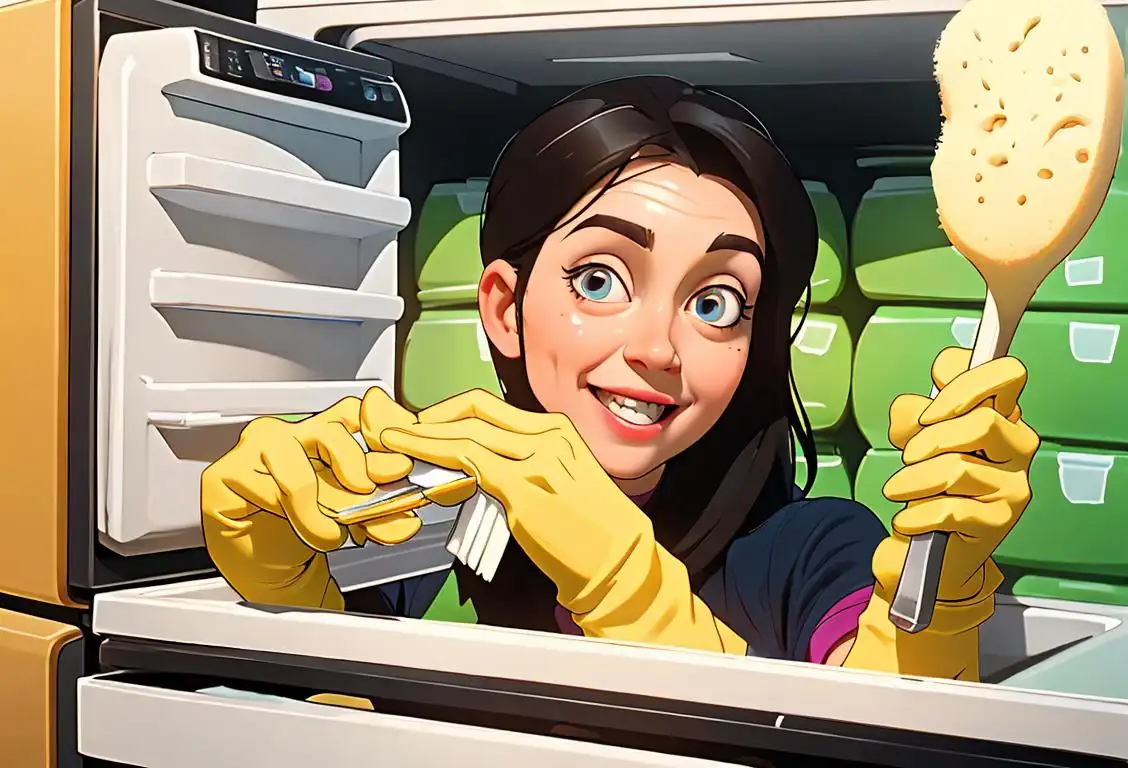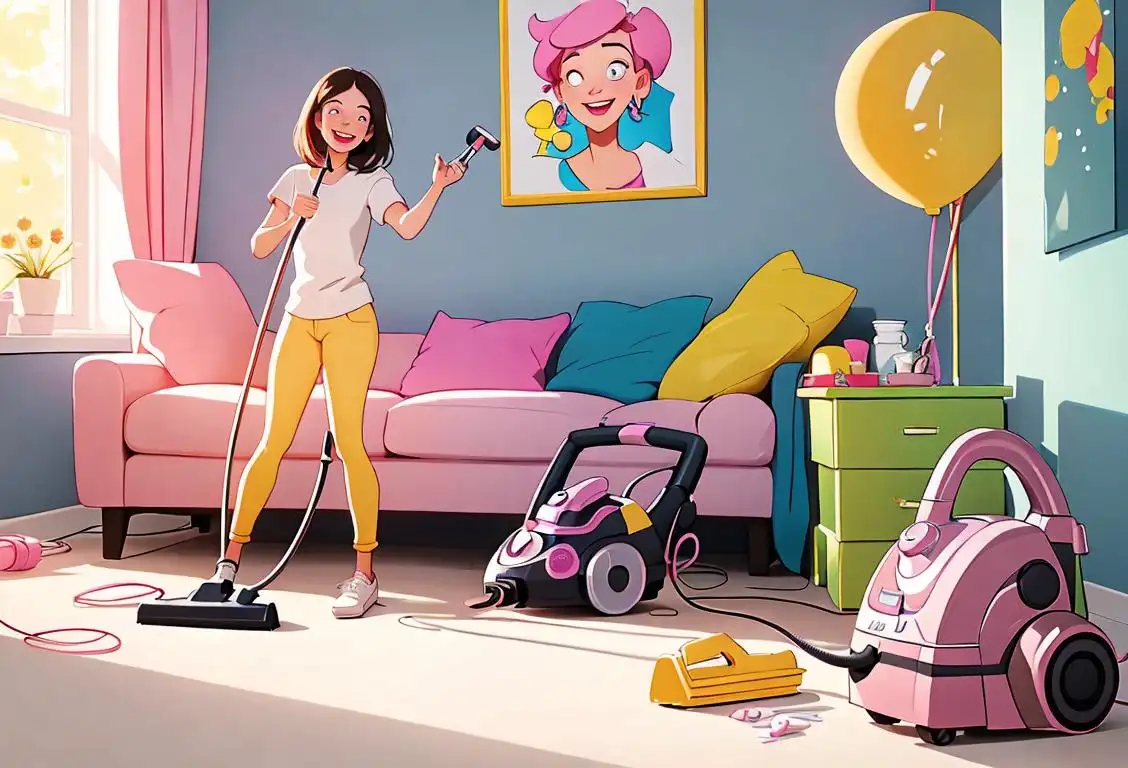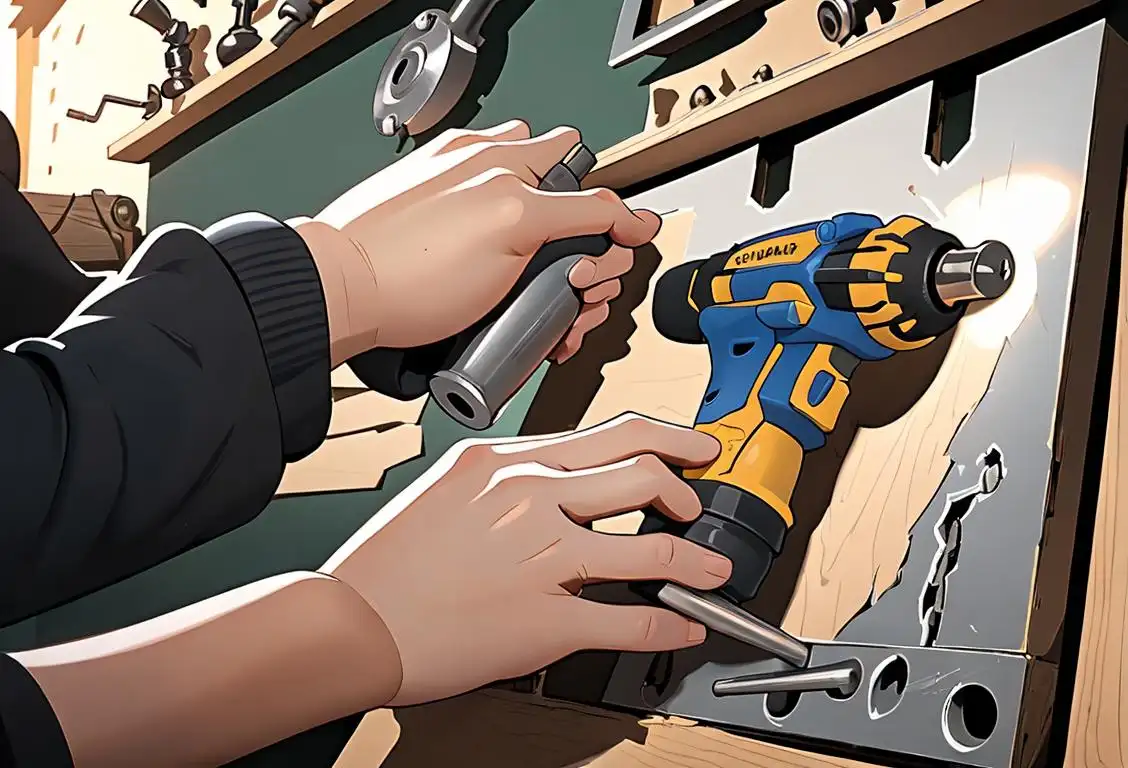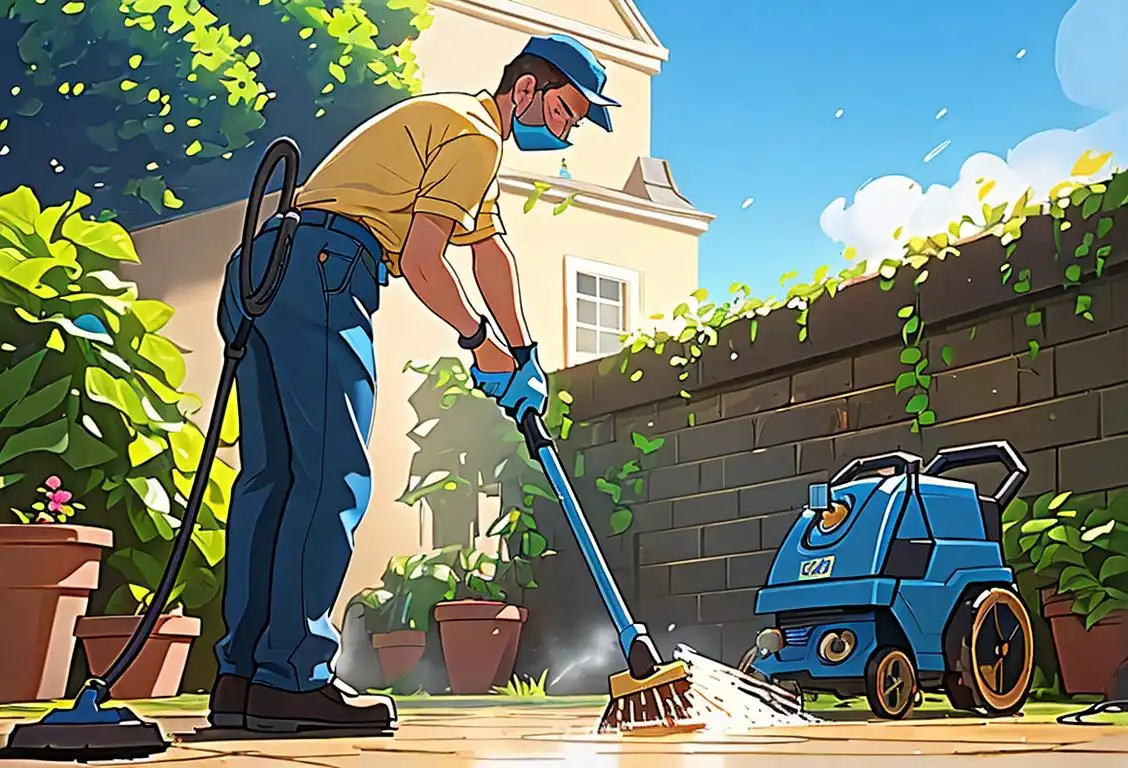National Vacuum Your Carpet Day
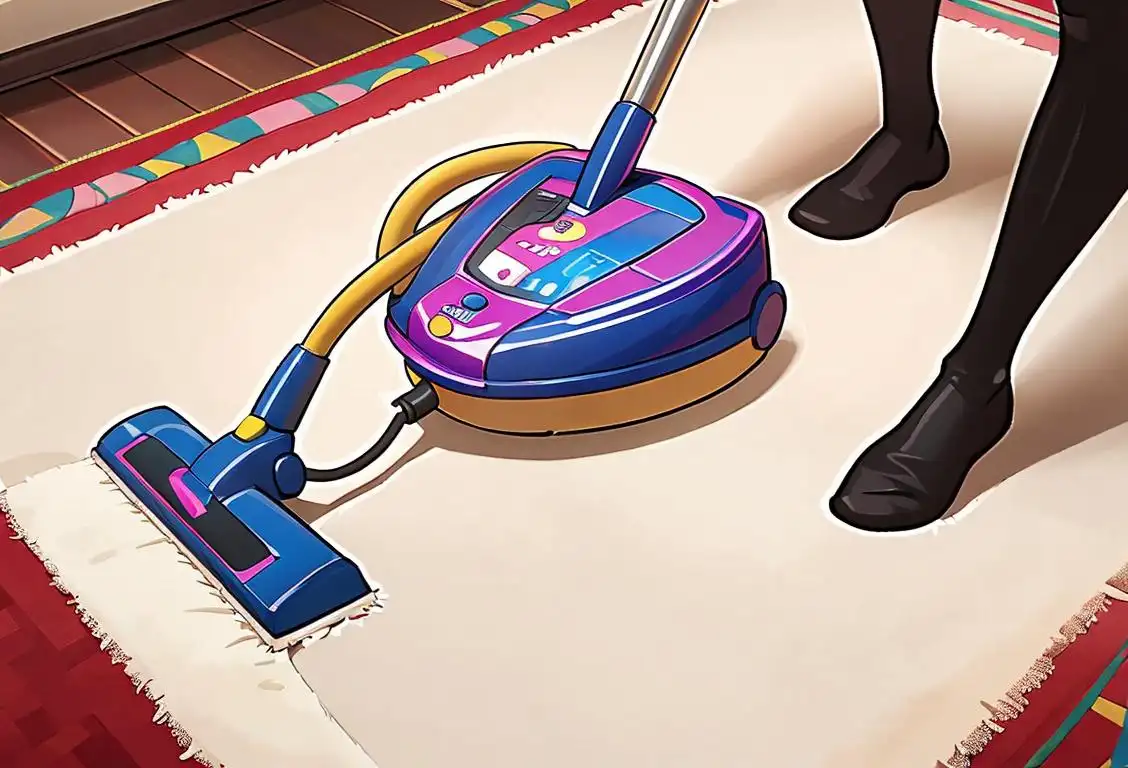
Welcome to National Vacuum Your Carpet Day! Get ready to celebrate the wonderful world of carpet cleaning and make those dust bunnies tremble in fear. It's time to grab your vacuum cleaner, put on some upbeat music, and unleash your inner cleaning superhero. This is a day to show your carpets some love and bring a little sparkle to your home. So, let's dive into the history and fun facts of this fresh and fabulous national day!
When is Vacuum Your Carpet Day?
It's national vacuum your carpet day on the 4th July.
The Origin of National Vacuum Your Carpet Day
While the exact origins of National Vacuum Your Carpet Day remain a mystery, one thing's for sure – it's a day that celebrates cleanliness and the joy of tidying up. Whether you're a neat freak or someone who only vacuums when absolutely necessary, National Vacuum Your Carpet Day is the perfect opportunity to give your carpets some much-needed attention.
Perhaps the day was invented by a professional carpet cleaner who wanted to highlight the importance of regular maintenance. Or maybe it was simply dreamed up by a group of clean freaks who couldn't resist the satisfaction of a freshly vacuumed carpet. Whatever the case may be, this day is all about embracing the power of a pristine floor.
How to Celebrate
Celebrating National Vacuum Your Carpet Day is as easy as one, two, three – or rather, vacuum, rotate, and spot-clean! Here are a few simple steps to make the most of this fabulous day:
- Vacuum: Grab your vacuum cleaner and get to work! Glide across your carpets, rugs, and even those hard-to-reach corners. Let the satisfying hum of the vacuum soothe your soul as you banish dust and dirt from your controlled environment.
- Rotate: Did you know that regularly rotating your furniture can help prevent carpet wear and tear? Use this day as a reminder to rearrange your living room or dining area. It's like giving your carpets a refreshing makeover!
- Spot-clean: Are there any stubborn stains or spills ruining your carpet's look? Take this opportunity to spot-clean those areas and bring back the carpet's original splendor. Just make sure to use the appropriate cleaning products!
Did You Know?
Did you know that vacuum cleaners have come a long way since their invention in the early 20th century? The first portable vacuum cleaners were heavy, noisy, and required two people to operate – one to push the machine and another to operate the suction hose. Thankfully, modern vacuum cleaners are much lighter, easier to use, and often more efficient. So, the next time you effortlessly glide your vacuum across the floor, take a moment to appreciate the innovative technology that makes it all possible!
History behind the term 'Vacuum Your Carpet'
1850
The Invention of the Vacuum Cleaner
In the year 1850, the first vacuum cleaner was invented by Daniel Hess. This early version of the vacuum cleaner was a bulky hand-operated device that used bellows to create suction. Although it was not specifically designed for carpets, it laid the foundation for future developments in carpet cleaning technology.
1790
The Invention of the Carpet Sweeper
In the year 1790, a man named Daniel Hess invented the carpet sweeper. This early device was designed to manually sweep and clean carpets using a series of brushes and a handle. Although it was a significant improvement from the previous method of beating carpets outdoors, it still required physical effort and did not fully remove all the dirt and debris.
1797
Invention of the first automated carpet-sweeping machine
In 1797, an English inventor named George P. Winship designed and built the first automated carpet-sweeping machine. This machine was a milestone in carpet cleaning technology as it used a rotating brush to mechanically sweep the carpets and loosen the dirt embedded in the fibers. Winship's invention laid the groundwork for future advancements in carpet cleaning methods.
1928
The Invention of the Vacuum Cleaner
In the year 1928, the first iteration of the modern vacuum cleaner was invented. This machine incorporated suction to remove dust, dirt, and debris from carpets, making it considerably easier to maintain cleanliness within households. The invention of the vacuum cleaner marked a significant milestone in the history of home cleaning.
1798
Invention of the first mechanical carpet sweeper
In 1798, Daniel Hess invented the first mechanical carpet sweeper. This device used rotating brushes to sweep dirt and dust from carpets. Although it was an improvement over manual cleaning methods, it did not create a vacuum to remove deep-seated dirt.
13th century
Invention of rugs
During the 13th century, rugs were first invented in the Middle East. These woven coverings provided warmth and comfort to households.
1860
Introduction of manual carpet sweeping
By the mid-19th century, manual carpet sweeping became a common household chore. People would use brooms, brushes, or handmade tools to physically sweep the carpets in their homes. Although this method effectively removed larger debris, it was not efficient at cleaning deeply embedded dirt and dust.
1869
The Mechanical Carpet Sweeper
In 1869, Melville Bissell patented the first practical mechanical carpet sweeper. This handheld device used rotating brushes to sweep debris from carpets. While it was not a vacuum cleaner in the modern sense, it played a significant role in improving the cleanliness of carpets and reducing the need for manual labor in carpet maintenance.
18th century
Carpet sweepers emerge
In the 18th century, carpet sweepers were introduced as the first mechanized cleaning tool for carpets. They used rotating brushes to collect dust and dirt.
1860
Rise of the Vacuum Principle
In 1860, a major breakthrough in carpet cleaning technology occurred with the development of the vacuum principle. An inventor named Daniel M. Hess (unrelated to the earlier Daniel Hess) discovered that by using suction, rather than brushes, he could more effectively remove dirt and dust from carpets. This invention laid the foundation for the modern vacuum cleaner.
1950
Popularization of Carpeted Floors
During the 1950s, there was a surge in the popularity of carpeted floors within homes. The availability of wall-to-wall carpets allowed people to enhance the comfort and aesthetics of their living spaces. However, it also brought forth the need for regular maintenance to keep the carpets clean and free from dust, allergens, and debris.
1860
Introduction of the first manual vacuum cleaner
In 1860, the first manual vacuum cleaner was introduced by Daniel Hess's nephew, Hiram Herrick. This device featured a bellows mechanism that created suction to pull debris into a container. While more effective than the mechanical carpet sweeper, it still required manual operation and did not use electricity.
1901
Development of the first electric vacuum cleaner
In 1901, Hubert Cecil Booth invented the first electric vacuum cleaner. This breakthrough innovation utilized an electric motor to generate suction and remove dirt from carpets. Booth's invention revolutionized the cleaning industry, making it easier and more efficient to clean carpets.
1901
The First Electric Vacuum Cleaner
The year 1901 marked a significant milestone in carpet cleaning history with the invention of the first electric vacuum cleaner. Hubert Cecil Booth, an English engineer, developed a large, horse-drawn, petrol-powered vacuum cleaner. Although it was not as convenient and portable as modern vacuum cleaners, this invention revolutionized the cleaning industry by introducing electric power into the process.
1960
Vacuuming Becomes a Common Chore
By the 1960s, vacuuming had become a common household chore worldwide. With the increasing awareness of hygiene and cleanliness, vacuum cleaners became an essential tool to maintain the cleanliness of carpets. Regular vacuuming not only improved the appearance of carpets but also helped eliminate potential health hazards associated with dirty carpets.
1901
The Horse-Drawn Vacuum
The year 1901 saw the introduction of the horse-drawn vacuum cleaner by Hubert Cecil Booth. This immense contraption was pulled by horses and featured a large vacuum unit. Its purpose was to remove dust and debris from public spaces like hotels and theaters. Though not suitable for domestic use, it marked a major advancement in carpet cleaning technology.
1901
Invention of the vacuum cleaner
The year 1901 marked a significant milestone in carpet cleaning history with the introduction of the first portable vacuum cleaner by Hubert Cecil Booth, a British engineer. Booth's vacuum cleaner used suction to remove dirt, dust, and debris from carpets, providing a more effective and efficient cleaning method than manual sweeping. This invention revolutionized carpet cleaning practices and eventually led to the term 'vacuum your carpet' becoming widespread.
19th century
Invention of the vacuum cleaner
In the late 19th century, the first vacuum cleaner was invented by British engineer Hubert Cecil Booth. It utilized a manual pump, bellows, and a cloth filter to create suction and remove debris from carpets.
1920
Introduction of portable vacuum cleaners
In the 1920s, portable vacuum cleaners became more popular. The first portable vacuum cleaner was introduced by William Henry Hoover, who founded the Hoover Company. These lightweight and portable machines allowed homeowners to easily clean their carpets without the need for heavy, cumbersome equipment.
1907
The Portable Electric Vacuum Cleaner
1907 was the year James Murray Spangler received a patent for the first portable electric vacuum cleaner. Spangler, a janitor, built the device using a fan, a pillowcase, and a broom handle. This invention was later refined and marketed by William Henry Hoover, leading to the popularization of the modern electric vacuum cleaner and its widespread use in homes.
1905
Domestic Vacuum Cleaners Become Popular
Around 1905, the first commercially successful domestic vacuum cleaners became available. Companies like Hoover and Kirby started producing portable vacuum cleaners that made carpet cleaning more accessible to homeowners. With their compact size and improved suction capabilities, these vacuum cleaners quickly gained popularity and became a household essential.
1980
Improved Vacuuming Technology
In the 1980s, vacuum cleaners underwent significant technological advancements. Manufacturers introduced more efficient motors, enhanced filtration systems, and improved carpet cleaning attachments. These innovations made vacuuming more effective and efficient, leading to better carpet maintenance and higher cleaning standards.
1930
Mass production and popularity of vacuum cleaners
During the 1930s, vacuum cleaners became more affordable and accessible to the general public. The mass production of vacuum cleaners by companies such as Hoover and Electrolux made them a common household appliance. As more homes adopted this convenient cleaning tool, 'vacuum your carpet' became a popular phrase used to describe the act of using a vacuum cleaner to clean carpets thoroughly.
20th century
Electric vacuum cleaners
In the early 20th century, electric vacuum cleaners replaced the manually operated ones. This innovation allowed for more efficient and convenient carpet cleaning.
Present
Continued Importance of Vacuuming
Today, vacuuming your carpet remains an integral part of household cleaning routines. Vacuum cleaners are available in various types, including upright, canister, and robotic models, catering to different needs and preferences. Routine vacuuming not only helps extend the lifespan of carpets but also contributes to a healthier indoor environment by reducing allergens and pollutants.
Present
Continued advancements in vacuum cleaner technology
In modern times, vacuum cleaners have evolved into sophisticated machines with various attachments, advanced filtration systems, and even robotic capabilities. These advancements have further improved the efficiency of carpet cleaning and made it easier for individuals to maintain clean carpets. The term 'vacuum your carpet' remains a standard expression used worldwide to describe the action of using a vacuum cleaner to remove dirt, dust, and allergens from carpets.
1920s
Improvements in vacuum technology
During the 1920s, advancements in vacuum technology led to the introduction of beater bars. These rotating brushes enhanced the cleaning power of vacuum cleaners, making it easier to remove embedded dirt from carpets.
1950
Introduction of Vacuum Attachments
In the 1950s, vacuum cleaners started to come equipped with various attachments to enhance their functionality. These attachments, such as crevice tools, upholstery brushes, and extension wands, allowed users to clean different surfaces and hard-to-reach areas effectively. The introduction of vacuum attachments made carpet cleaning more efficient and versatile.
1970
Invention of modern carpet cleaning machines
In the 1970s, the carpet cleaning industry saw advancements in technology and the introduction of modern carpet cleaning machines. These machines, equipped with rotating brushes, high-pressure water sprays, and powerful suction, made it possible to deeply clean carpets and remove stubborn stains effectively.
1950
Revolutionary Vacuum Cleaner Designs
The 1950s witnessed an influx of innovative designs of vacuum cleaners. Manufacturers introduced improvements such as disposable vacuum bags, more efficient filters, and increased maneuverability. These advancements made vacuuming carpets easier, more effective, and less time-consuming for home users.
1978
The Introduction of Upright Vacuum Cleaners
In 1978, the first upright vacuum cleaner was introduced by James Dyson. This design utilized cyclonic separation, removing the need for a traditional filter and improving suction efficiency. Upright vacuums quickly gained popularity for their convenience, maneuverability, and superior performance on carpets.
Present
Availability of advanced vacuum cleaners
Today, we have a wide range of advanced vacuum cleaners specifically designed for carpet cleaning. From upright vacuums to canister vacuums and robotic vacuum cleaners, there are options to suit every individual's needs. Modern vacuum cleaners employ advanced features like HEPA filters, cyclonic suction, and smart technology, ensuring efficient and thorough carpet cleaning.
1978
Invention of the Upright Bagless Vacuum Cleaner
The year 1978 saw the introduction of a revolutionary vacuum cleaner design: the upright bagless vacuum cleaner. James Dyson, a British inventor, developed this innovative vacuum cleaner that used cyclonic separation to remove dirt and dust. The bagless feature eliminated the need for disposable vacuum bags, making the cleaning process more convenient and economical.
1970s
Introduction of residential vacuums
In the 1970s, the market saw the rise of residential vacuum cleaners designed specifically for household use. These lightweight and user-friendly machines gained popularity and made carpet cleaning accessible to individuals.
2002
The Rise of Robot Vacuum Cleaners
In 2002, the first robot vacuum cleaner, named Roomba, was introduced to the market. Created by the company iRobot, Roomba became a pioneer in autonomous cleaning technology. These small, disc-shaped devices could navigate a room, detect obstacles, and perform vacuuming tasks on their own. Robot vacuum cleaners revolutionized carpet cleaning by providing a hands-free and time-saving solution.
Present
Ongoing carpet cleaning practices
Today, vacuuming your carpet is an essential part of regular household cleaning. With advancements like HEPA filters, bagless technology, and robotic vacuum cleaners, keeping carpets fresh and free of dust has become more convenient and efficient than ever before.
Did you know?
Did you know that vacuum cleaners have come a long way since their invention in the early 20th century? The first portable vacuum cleaners were heavy, noisy, and required two people to operate – one to push the machine and another to operate the suction hose. Thankfully, modern vacuum cleaners are much lighter, easier to use, and often more efficient.Tagged
cleaning household maintenance home improvementFirst identified
4th July 2016Most mentioned on
4th July 2016Total mentions
196Other days
Vacuum Your Carpet Day
No Housework Day
Clean Out Your Refrigerator Day
Bicarbonate Of Soda Day
Put A Pillow On Your Fridge Day
Create A Vacuum Day
Screw Day
Purge Day
Hoover Day
Pressure Washer Day

